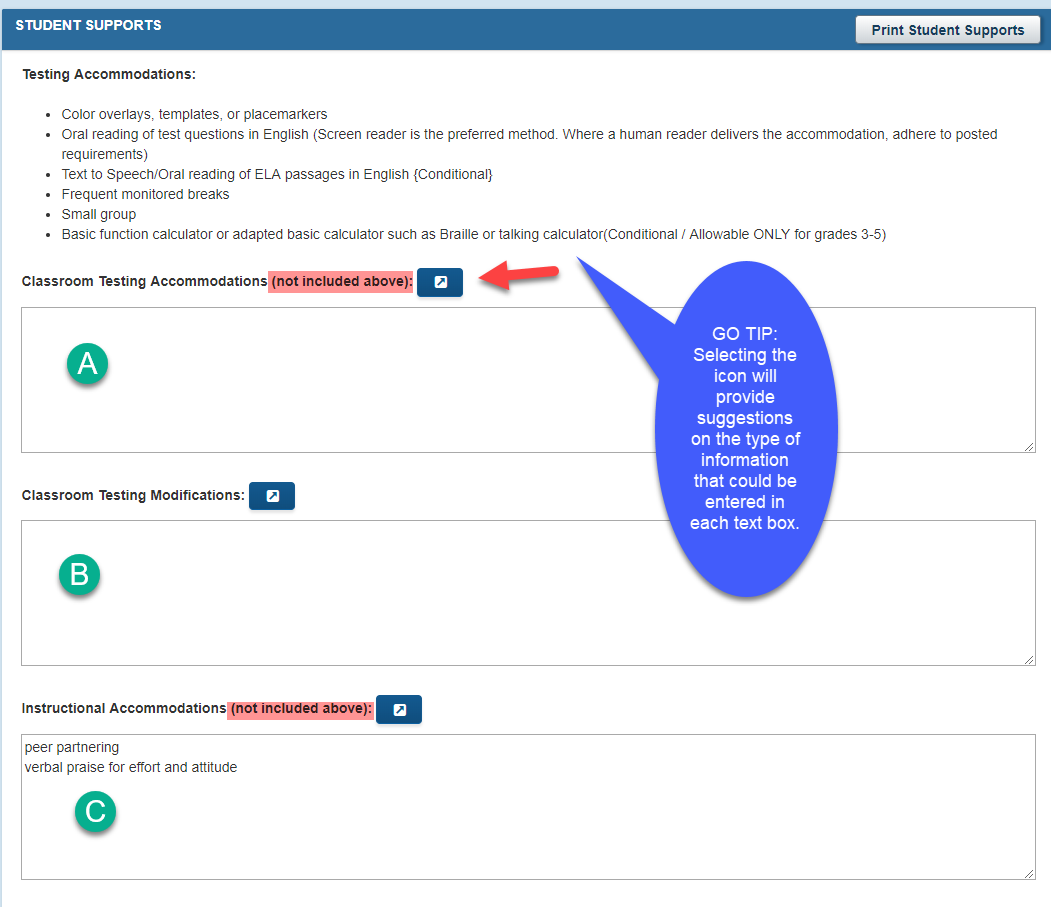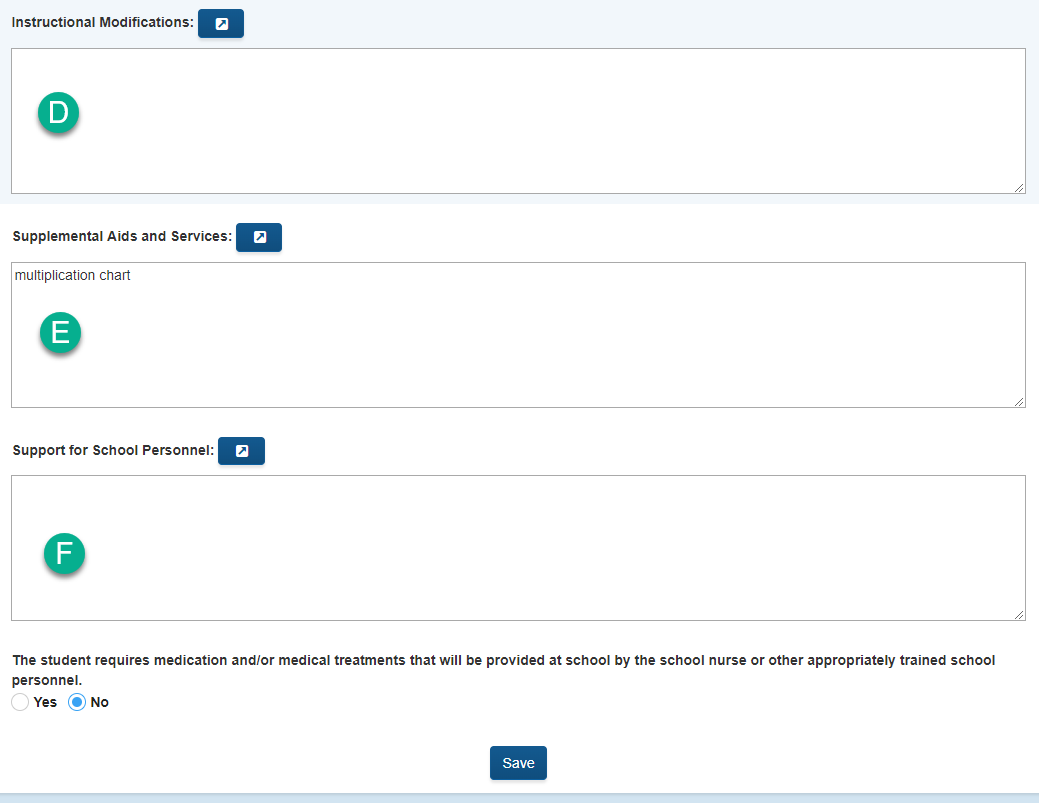Student Supports
A student with a disability should be provided accommodations that assist him/her to be successful in general education or special education settings. Accommodations can be made to various components, including but not limited to the instructional delivery, materials, evaluations, and settings. For example, a student may need printed materials provided in Braille or additional time to complete assignments. Accommodations are individually determined by each student's IEP team.
Testing and Instructional Accommodations are prepopulated based on information selected on the State Testing page. Additional accommodations not needed for state testing can be added.

A. Classroom testing accommodations should be individualized, determined by subject area, and be as specific as possible. Other examples of testing accommodations are the use of a text reader or calculator, special seating, etc. Testing accommodations should only be recommended if they are also included in the student’s instructional accommodations, although some instructional accommodations may not be appropriate for testing.
B. Classroom testing modifications are test adaptations that allow the student to demonstrate what he knows or can do. Modifications change the target skill and may reduce learning expectations or affect the content in such a way that what is being tested is fundamentally changed.
C. Instructional accommodations may include how instruction is provided, how the student is expected to respond instructionally, how the student participates in classroom activities, and the kinds of instructional materials used. Accommodations provide students with disabilities a variety of ways to access the Georgia Performance Standards so that their disabilities are not barriers to achievement. Students with accommodations are still expected to meet the same grade level standards as their peers without disabilities. For example, a student might listen to portions of a text on tape rather than reading it, answer questions orally or use a computer keyboard instead of writing with a pencil, use large print text books, watch video with captions, or participate in a discussion in a Biology class with a sign language interpreter. Accommodations should provide access to or promote skill growth, and some accommodations may be used instructionally that will not necessarily be used for assessment. Appropriateness and efficacy of accommodations should be evaluated on an ongoing basis. Accommodations should not be confused with differentiated instruction.

D. Instructional modifications are instructional adaptations that allow the student to demonstrate what he knows or can do. Modifications change the target skill and may reduce learning expectations or affect the content in such a way that what is being taught is fundamentally changed.
E. Supplemental aids and services should include supports that are provided in general education classes or other education-related settings to enable students with disabilities to be educated with non-disabled students to the maximum extent appropriate. Examples include tutoring, adult assistance, note-taking, peer helper, pre-teaching/re-teaching or reinforcing concepts, behavior intervention plan, point sheet, assigned seating, etc. Some accommodations used for instruction may also be considered a supplemental aid and service.
F. Supports for school personnel should be included when training or other supports are being provided to district staff regarding a specific student’s need. Examples may include training on an assistive technology device, a workshop on a content area or disability area, crisis prevention training, consult for teacher provided by OT, PT, or SLP etc.
Supports for district personnel should be reviewed at least annually or can be changed at any time by amending the IEP. Decisions should be based on the student's progression towards the established IEP goals and the indirect supports needed for the student to progress towards those goals.
Example 1:
On the Considerations page, for the communication question, the team documented the following:

On the Supports for School Personnel section the team documented the following:

Example 2:
